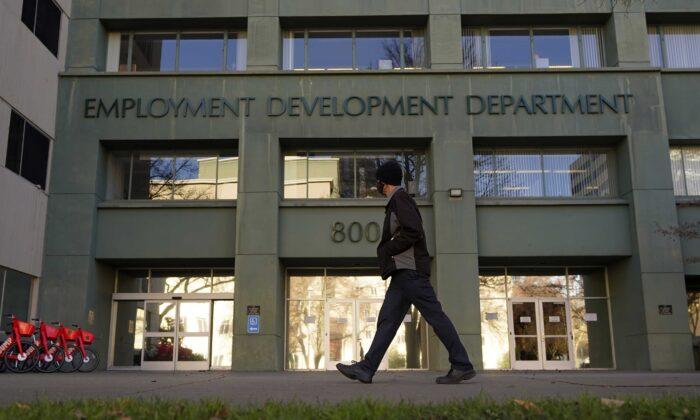Employee salaries have been on the rise for the past year, as employers struggled to retain and hire new staff as millions of American workers sought out jobs with higher wages.
Wage growth in nominal terms is by some measures stronger than has been seen in many decades.
The average U.S. employee made $31.85 an hour in April, said the report, which is an increase from the same time last year when the average was at $30.20 an hour, a 5.5 percent increase.
Wage increases grew in April, slightly slower than expected, after economists estimated that average wages would grow by 0.4 percent that month, but instead only witnessed a $0.10 rise from March, a 0.3 percent increase.
Wage increases are beginning to come head to head with soaring inflation, which is chipping away at paychecks.
Analysts are uncertain if or when inflation rates will go down.
Prices have been rising since last year, with inflation reaching a 41-year high in March of this year, due to supply chain issues, pandemic variants, and a war in Ukraine.
For twelve months from March 2021 to March 2022, consumer prices rose by 8.5 percent, several percentage points higher than the 5.6 percent in wage growth over the same period.
The actual rise in the cost of living is thought to be much higher when taking into account food and transportation prices.
With annual inflation increasing at its fastest pace since 1982, the rising cost of living is even forcing some retirees back into the workforce.
The job site said that on average, job seekers are expecting to make 34 percent, or $9,253 more than their current salary at their new employers, which actually exceeds current the growth rate in earnings.
Most sectors have seen their average hourly earnings increase from March through April this year, led by mining and logging, with an increase of 1.12 percent, but retail and utilities saw a decline in wages over the same period.
Despite the decline, these wages in retail and utilities are still higher than they were a year ago.
There were 11.5 million job openings at the beginning of April, widening the jobs to workers gap by a record 3.4 percent of the labor force from 3.1 percent in February.
The sluggish growth in average hourly earnings in April lowered the year-on-year increase from 5.6 percent in March, while the average workweek remains the same this month at 34.6 hours.
Though U.S. economic growth numbers remain positive, the GDP contracted 1.4 percent in the first quarter under the weight of a record trade deficit, highlighting the Federal Reserve’s need to curb inflation.
The Fed raised its policy interest rate by 50 basis points on May 4, in the biggest hike in 22 years, and said that it would begin trimming its bond holdings in June.Fed Chairman Jerome Powell on May 4 said, that a 75-basis-point rate hike was not on the table, but some economists believe that the central bank could still raise its benchmark interest rate above its estimated neutral rate of between 2 and 3 percent.
However, there is still concern that the Fed would raise rates too high and choke off economic growth.
Though exports took a hit in the first quarter due to the trade deficit, domestic demand consumption remains strong, with consumer spending and investment in business equipment continuing to make gains.
Reuters has contributed to this report.




